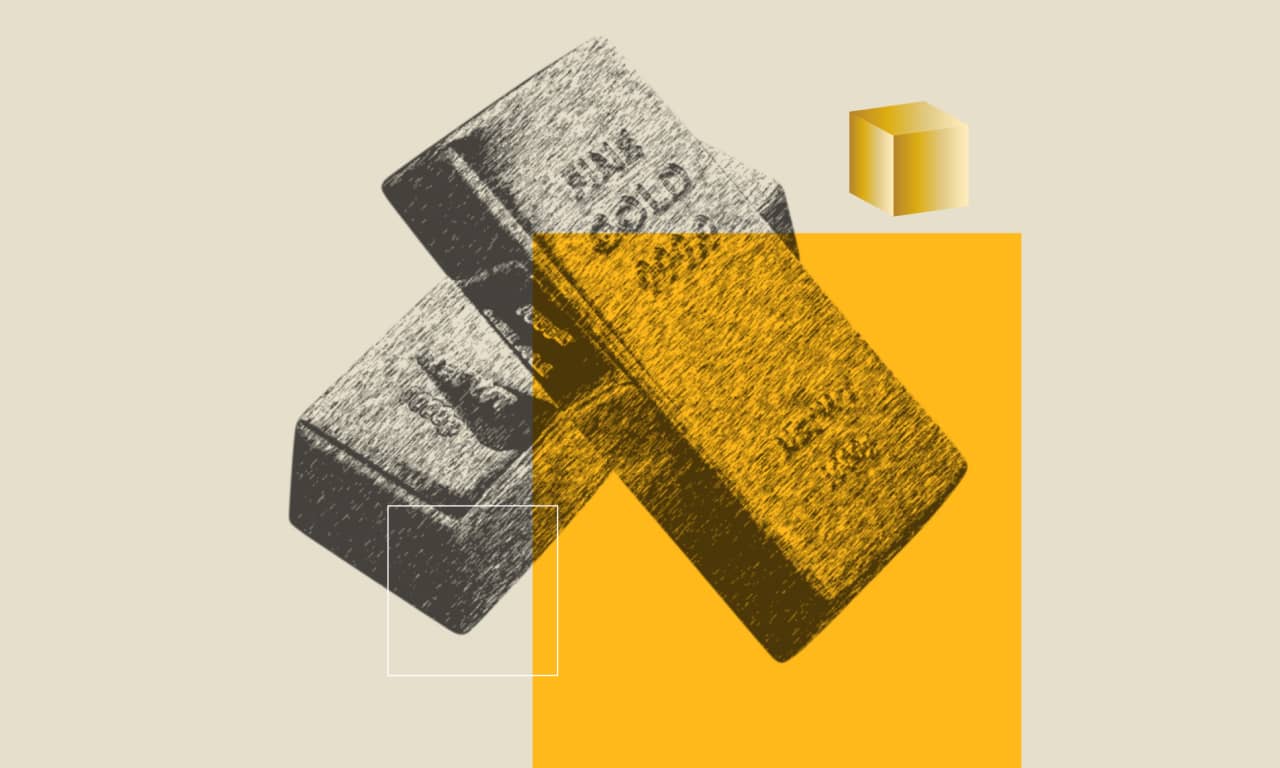Gold has been used as a form of payment since early civilisations, making it one of the oldest currencies in the world. It has been recognised for centuries as a store of value, meaning it can hold its worth over a long period of time and doesn’t depreciate. It’s one of the reasons why many regard it as a sign of wealth as well.
This metal is highly malleable and doesn’t degrade, which is exactly why it’s considered precious, making it one of the most widely traded raw materials across the globe today. Due to its popularity and high value, its price fluctuates more than other commodities. Many online traders see these price movements as great trading opportunities to acquire more potential gains.
In this blog, we’ll go over what gold trading is, what influences its price, and how to trade it online alongside other assets.
What is gold trading?
Gold trading refers to speculating on gold’s price to make a profit, and there’s a number of ways you can do this online. On Deriv, you can trade gold with CFDs and options.
CFDs and options allow you to predict gold’s price movements without having to own or buy it. These trade types give you more flexibility since you don’t have to adhere to the typical buy low-sell high approach, letting you potentially profit from both rising and falling markets. Regardless of the position you take, your goal is to correctly predict the future direction of the market.
With CFDs, you can go long or go short and keep your trade open as long as you want if you have sufficient capital to maintain it. The more the market moves in your favour throughout the period of your trade, the greater your potential gains. However, the more it moves against you, the more losses you’ll incur.
Whereas with options, you predict price movements within a set timeframe. Plus, you know beforehand how much your potential payout is and your loss is limited to your stake.
Read our “What is CFD trading?” blog to find out how CFD trading works. If you prefer options trading, check out our “What is options trading” blog.
Factors affecting gold prices
As with any other asset, gold’s price is influenced by both supply and demand. Gold prices fall if the market becomes saturated with supply and the demand for it isn’t sufficient enough to match. However, if the demand is strong and the supply is low, gold prices rise.
A number of factors influence gold’s supply and demand, resulting in significant price fluctuations. Here are 3 of them.
Value of the US dollar
Gold is a dollar-denominated metal, meaning its price is pegged to the value of the US dollar. This influence greatly impacts gold’s price. Whenever the value of the dollar drops, people turn to other investments to reserve their wealth, and gold is seen as the best option due to its intrinsic value. Additionally, a declining dollar increases the purchasing power of other currencies, potentially boosting demand for gold, causing its price to rise.
Rising inflation
Inflation occurs when a particular currency’s purchasing power weakens. As a result, people seek safe haven assets. A safe haven is an investment that is expected to retain or increase in value during times of market volatility.
Gold is generally considered a safe haven asset. Although it’s more volatile than other assets in the commodity market, its volatility is still very low compared to other markets. That’s why, many use it as a hedge against inflation to reduce their exposure to losses.
Scarcity in production
Mining and recycling are the two major sources of gold production. However, due to the finite nature of gold and the fact that most of the world’s gold reserves have already been mined, it’s expected to deplete over time.
To meet the demand, what’s currently on the market is being recycled and more companies are exploring advanced mining technologies to locate gold deposits. However, any new discovery will spike gold’s price in the short-term since everyone wants to get their hands on it. And, following the law of supply and demand, if the supply cannot keep up with the demand, it’s price is expected to continue rising.
Platforms to trade gold on Deriv
Trading gold is available on a number of platforms on Deriv.
You can trade gold with CFDs on Deriv MT5 and Deriv X. Deriv MT5 is the world’s most popular CFD trading platform that is equipped with trading tools and plugins, including analytical objects, technical indicators, and more. While Deriv X is a customisable trading platform that allows you to personalise your workspace. It is packed with advanced features and designed to fit your trading style.
When it comes to trading gold with options, you can choose DTrader and DBot. DTrader offers flexible trade durations and you can open positions with stakes as low as 0.5 USD. Now, if it’s automated trading you prefer, DBot is the trading platform to use as it allows you to build your trading bot in 5 steps without any coding skills needed.
Practice trading gold risk-free! Sign up for a free demo account that’s preloaded with 10,000 USD virtual money and available for any of the platforms mentioned above. As soon as you feel confident about your trades, you can switch to a real account right away.
Disclaimer:
Options trading on commodities on DTrader are not available for clients residing within the European Union or the United Kingdom.
Deriv X is not available for clients residing within the United Kingdom or the European Union. DBot is not available for clients residing within the United Kingdom.
